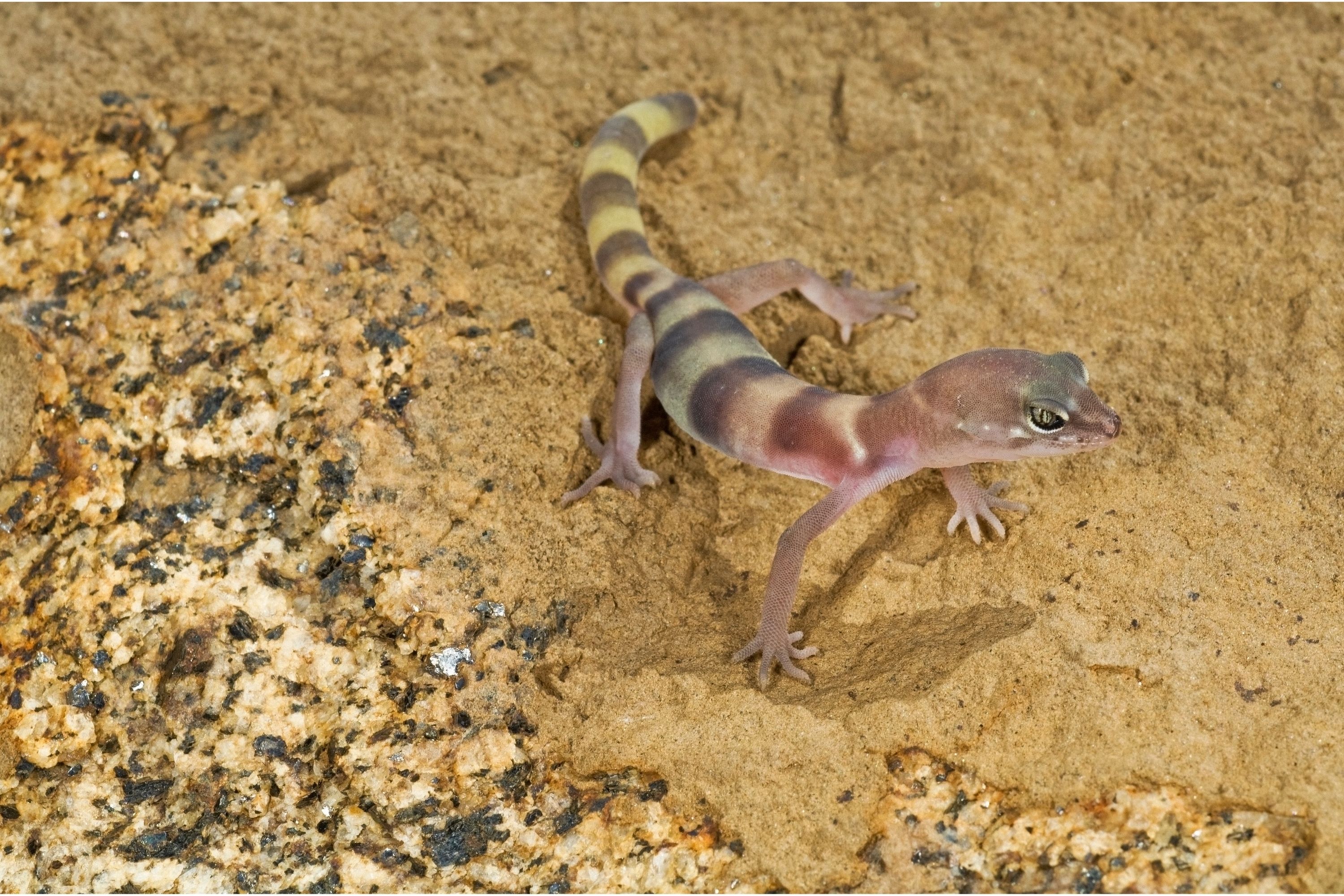Western banded gecko
(Coleonyx variegatus)

Description
The western banded gecko (Coleonyx variegatus) is a species of lizard in the family Eublepharidae. The species is native to the southwestern United States and adjacent northwestern Mexico. Five subspecies are recognized. The western banded gecko is a terrestrial lizard, ranging in total length (including tail) from 4–6 inches (10–15 cm). Hatchlings measure 1 inch (2.5 cm). The body is sandy-colored with dark crossbands broken into patches. The tiny scales give its skin a silky texture. Unlike typical geckos, it has prominent eyes with movable lids. The western banded gecko is found in a wide range of habitats, including creosote bush and sagebrush desert, pinyon-juniper woodland, and catclaw-cedar-grama grass associations in the eastern part of its range and chaparral areas in the west. Its elevational range extends from below sea level to about 1,520 m (4,990 ft) asl. The western banded gecko is secretive and nocturnal, with individuals remaining hidden during the day and emerging after sunset to forage for food. C. variegatus preys on small insects and spiders, and is one of the few reptiles that control scorpion populations by eating baby scorpions. Individuals prefer warm nights around 80°F, and they can often be seen near human habitations looking to make an easy meal of the insects attracted to landscape or porch lighting. C. variegatus is preyed upon by many species including coyotes, foxes, snakes, larger lizards, and even large invertebrates such as tarantulas and solpugids. If captured, C. variegatus may squeak and may discard its tail in an attempt to distract the predator and escape. To deter predation, it can also curl its tails over its body to mimic a scorpion. Breeding occurs during April and May. Females lay up to three clutches of one to two soft-shelled eggs in the spring and summer. Eggs hatch after six weeks.
Taxonomic tree:







